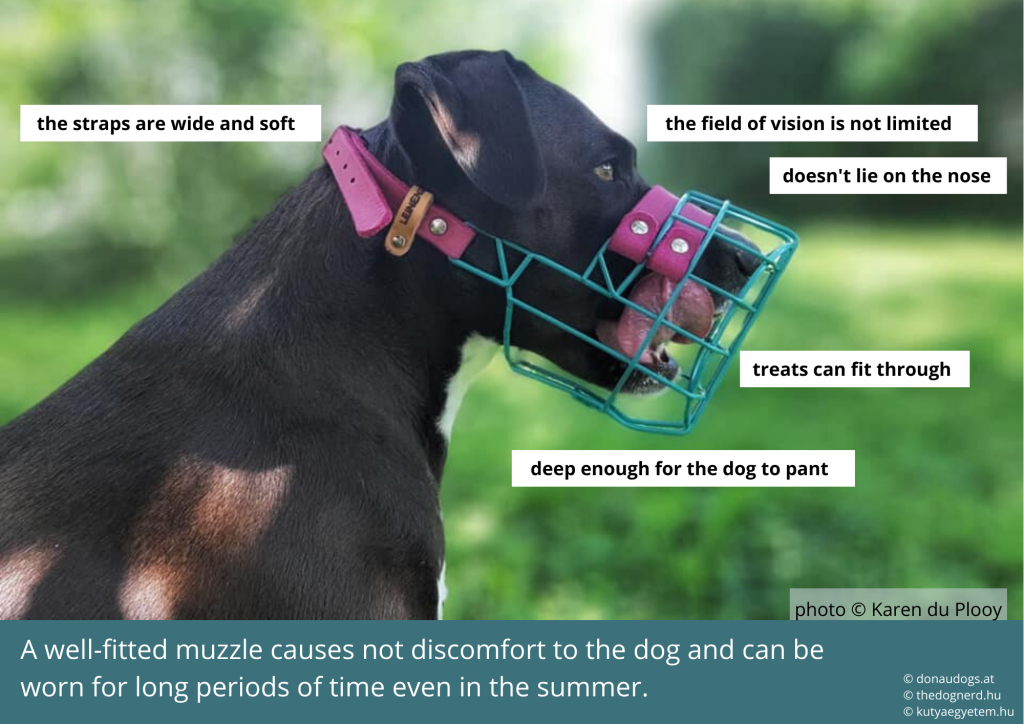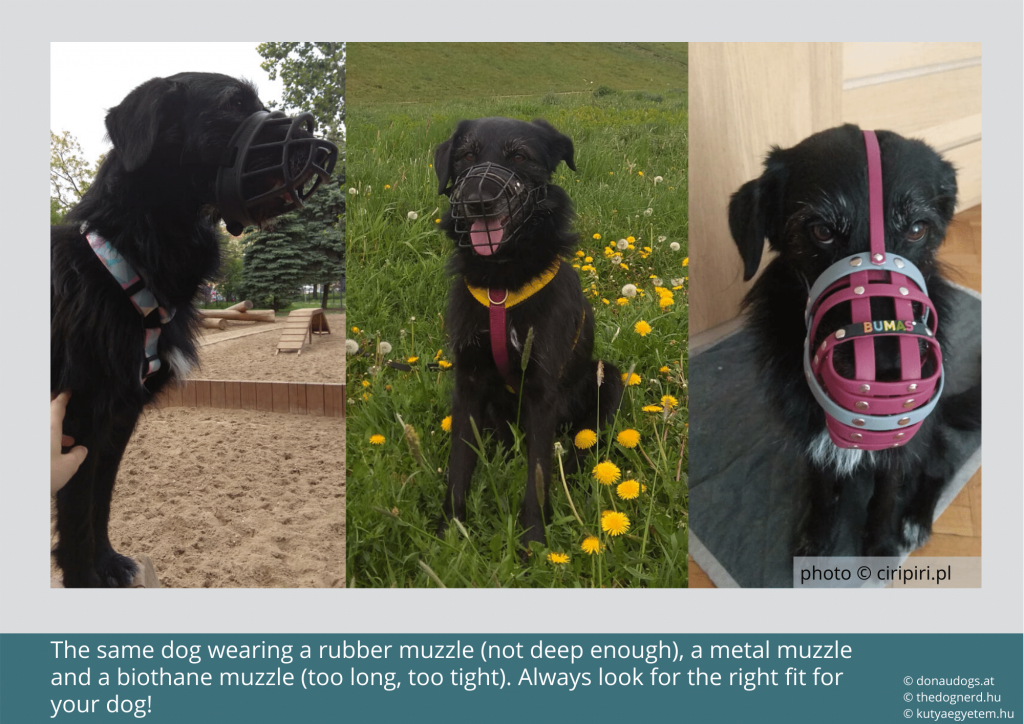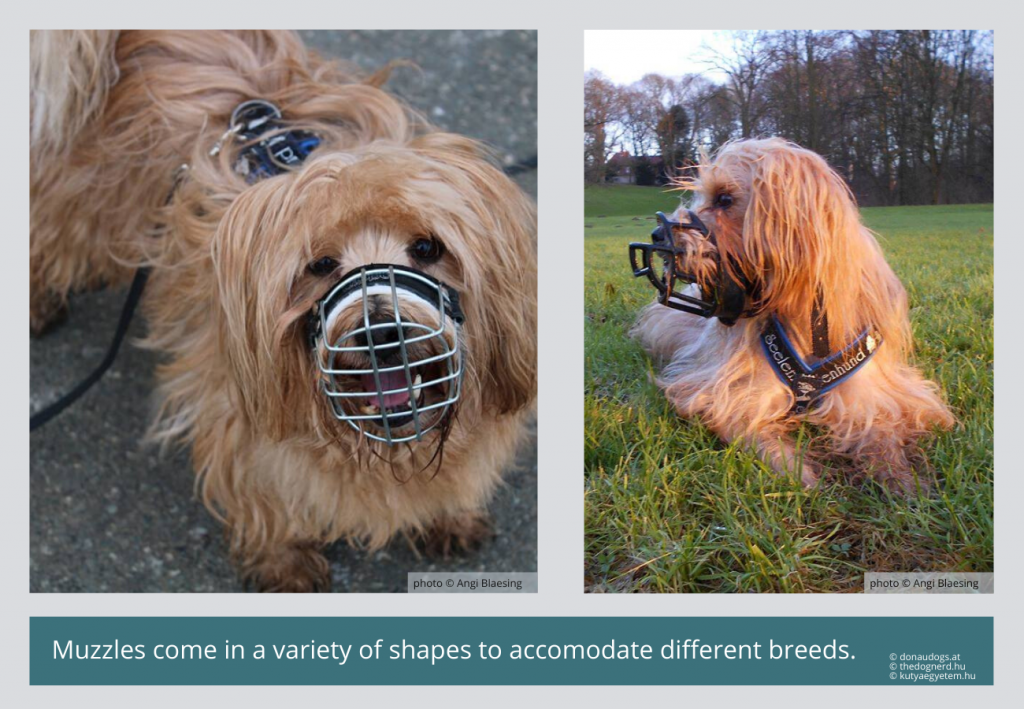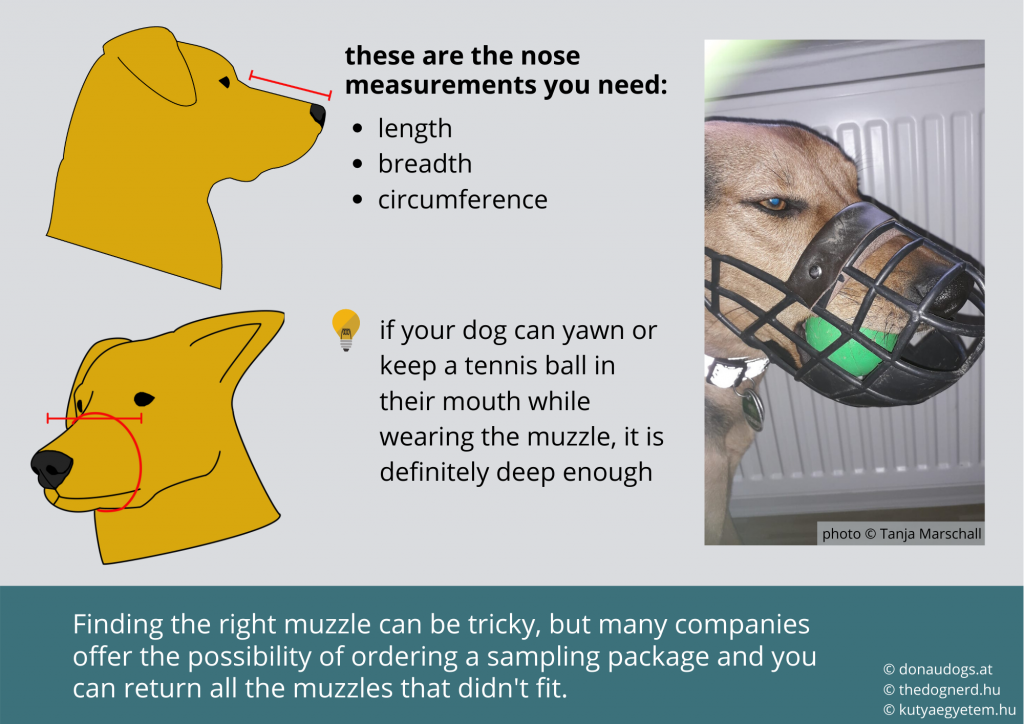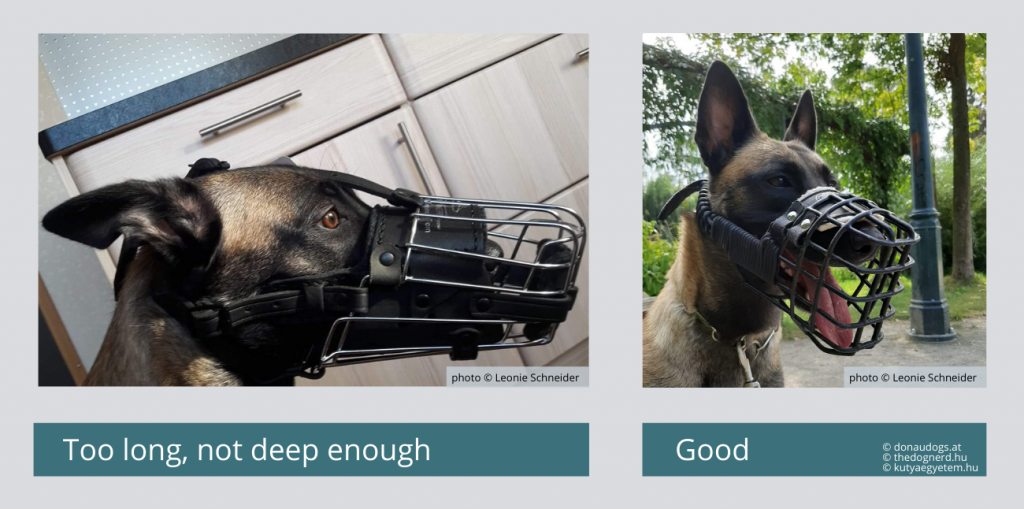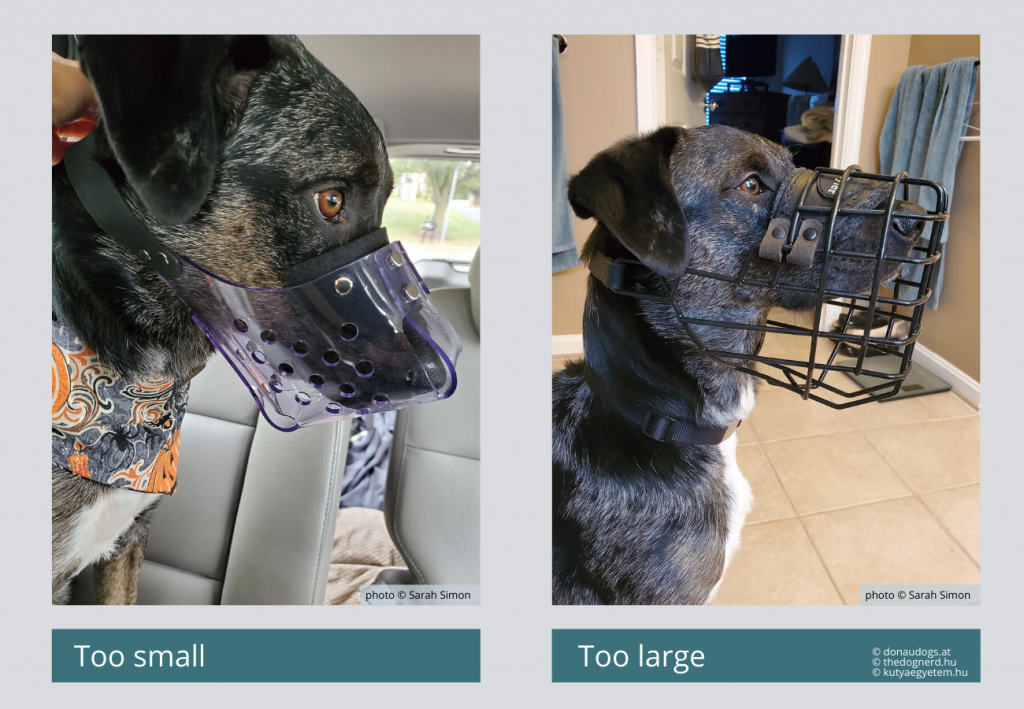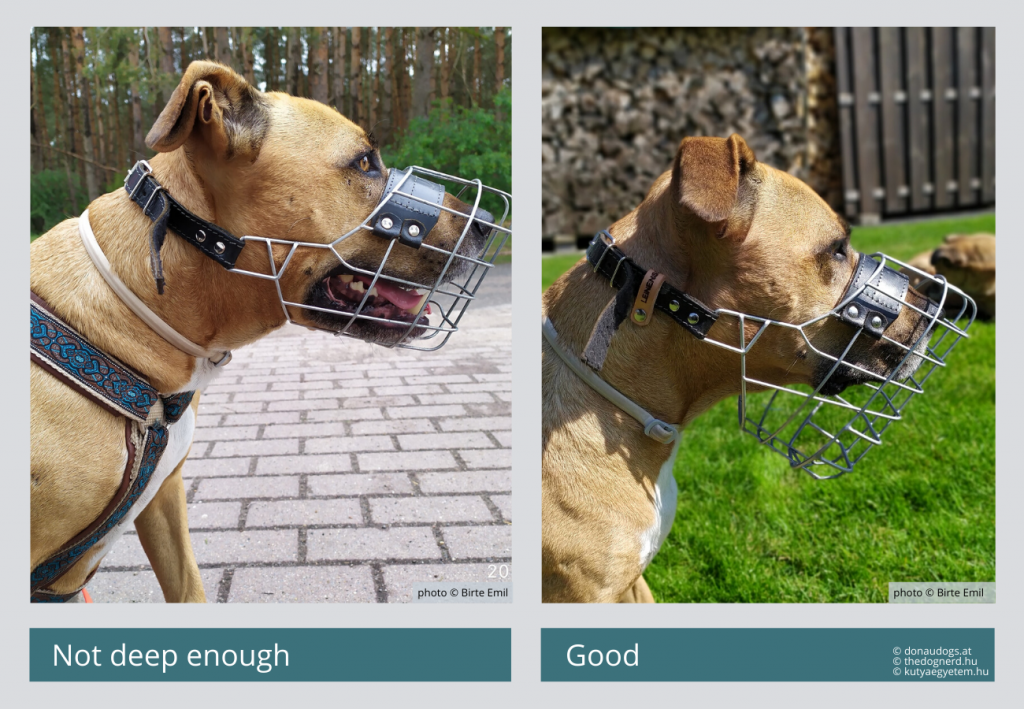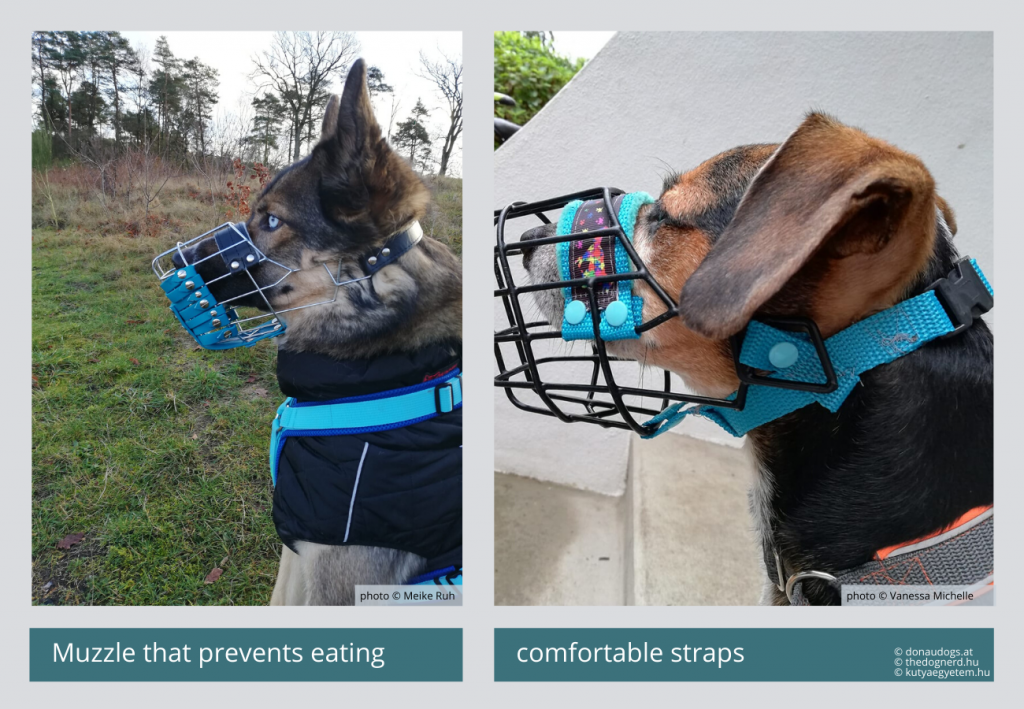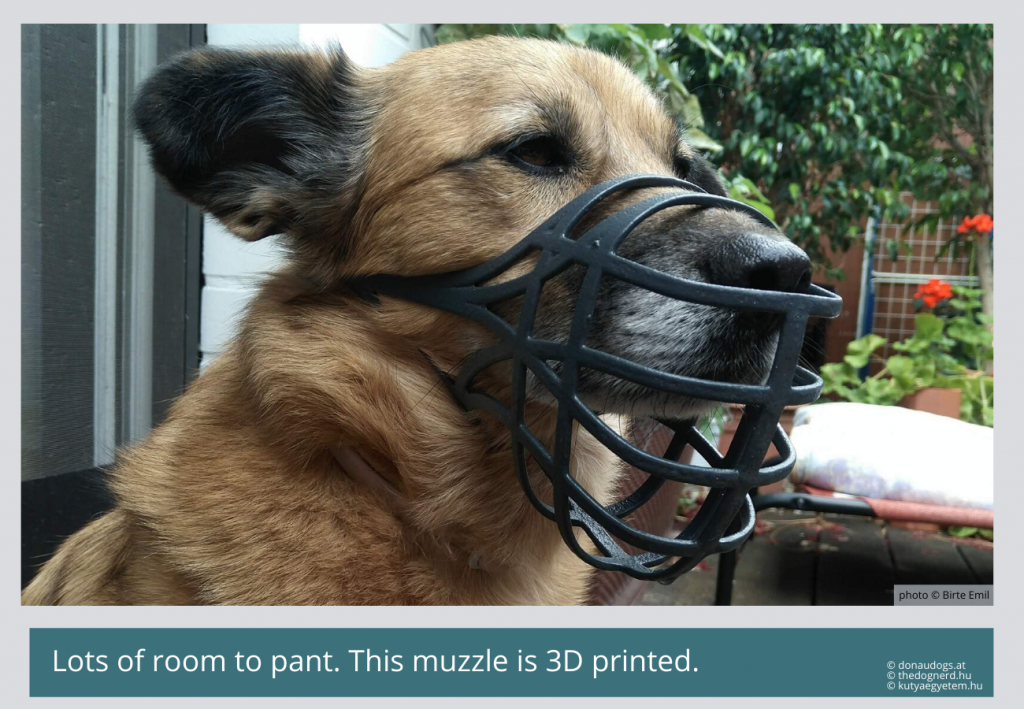Intro
Muzzles are disliked by many dog owners, because we automatically associate a dog wearing a muzzle with aggression. But actually there’s a wide range of situations in which muzzles are required by the law (for example on public transport). With appropriate training, your dog should have no problem wearing a well-fitted muzzle.
Why do you need a muzzle?
Before you think of anything else, you need to decide why you need the muzzle:
-
- just “for show” (that is, to adhere to the rules) on public transport, if you’re dog doesn’t bite, a muzzle from light materials will be enough
- to prevent your dog from eating stuff – if your dog has food intolerances, a specially designed muzzle can help you avoid trouble while you’re doing food training1
- for bite prevention – as an additional safety measure during walks, training or in situations your dog hasn’t mastered yet
Remember, safety comes first. There is no shame in having your dog wear a muzzle for example during a family visit, if you’re not certain yet of how they might behave.
Materials and make
Once you know the purpose, you can consider what material and make you should choose. The muzzle must be comfortable – no amount of training will help if it hurts your dog.
Biothane muzzles are soft and pretty, and they are easy to customize. They are not as sturdy as metal or plastic ones. If you want your dog to still look friendly, they might be a good choice. They are expensive, but you can also make them yourself.
Leather muzzles have the same advantages as the biothane ones and they are a little less expensive.2. However, leather requires a lot of care, otherwise it becomes rough and uncomfortable.
Plastic muzzles are sturdy, but they can feel too rough for some dogs. In some countries custom 3D printed muzzles are available. They are custom made and very light, which is an advantage. On the other hand, once they are printed they cannot be re-adjusted and they are very expensive.
Rubber muzzles are very light and the dog can’t cause injury even when they “hit” someone with then (which can be a real problem with metal muzzles). They are also adjustable to a certain extent (so called heat shaping). However, the most popular brand sells them only in one form and six sizes, which means that it’s quite likely you won’t find the right fit.
Metal muzzles are usually the strongest and the best if you’re worried about biting.3 They are lighter than biothane models too. You must still pay attention to your dog though, they won’t be able to bite but they can still cause damage if they run into someone with the hard, metal muzzle. Another advantage is that most of the popular brands sell many different models and sizes, which makes finding a good fit easier.
Nylon/mesh muzzles may look friendly, but actually they don’t allow the dog to breathe freely or drink water, therefore, they’re not the best choice for most situations.
IMPORTANT: Regardless of the material, make sure that the straps for fastening the muzzle are wide and soft and do not hurt your dog.
Finding the right fit
In order to find the right muzzle, you must measure your dog. Your dog has to be able to drink, take treats and pant. Remember to add extra space to the muzzle circumference!
If there is no well-stocked shop in your area it is best to order multiple sizes and then return the ones that don’t fit.
Muzzle training
Getting the right fit is half the work, then you have to teach your dog to wear it. In general, muzzle training consists of the following steps:
-
- Feed your dog treats from the muzzle, until they stick their nose in without hesitation. You can achieve that for example by feeding them liver paste or peanut butter through the muzzle.
Expert tip: reward on time and always take away the muzzle before the dog tries to pull their head out! They are supposed to learn to keep their nose in, not take it out. - Add duration: wait for them to put their nose in and only then give the treat. Gradually increase the time before you deliver the treat to 1 second, 2 seconds, 3 seconds, 5 seconds…
- Once your dog can hold still for 5-10 seconds, start closing in the straps. First one, reward, off… etc. Until you can fasten the muzzle.
- Then have your dog wear it for short periods of time around the house while you do nice things – feed treats, do tricks, watch TV. Start with 30 seconds -1 minute and gradually build up the duration.
- Feed your dog treats from the muzzle, until they stick their nose in without hesitation. You can achieve that for example by feeding them liver paste or peanut butter through the muzzle.
This video made by Michael Shikashio shows a simple method for muzzle training your dog. In this tutorial it takes 3 weeks but remember, if your dog is especially sensitive, it can take longer. Always move at your dog’s pace!
Even if you don’t think your dog will ever need a muzzle (great with children, never takes public transport and so on), it makes sense to muzzle train them! You just never know when you might need it, and putting it on without any prior training can make muzzle training later on really hard.
Examples
Don’t miss any new posts, follow The Dog Nerd on facebook!
Check out my other equipment posts
How to choose the right collar for your dog
How to choose the perfect harness for your dog
How to choose the perfect leash for you and your dog
Help, my dog pulls on the leash!
These posts were created in collaboration with Donau Dogs, check out their website for the German version. The facebook cover photo for this post was taken by Vanessa Michelle, thank you!

